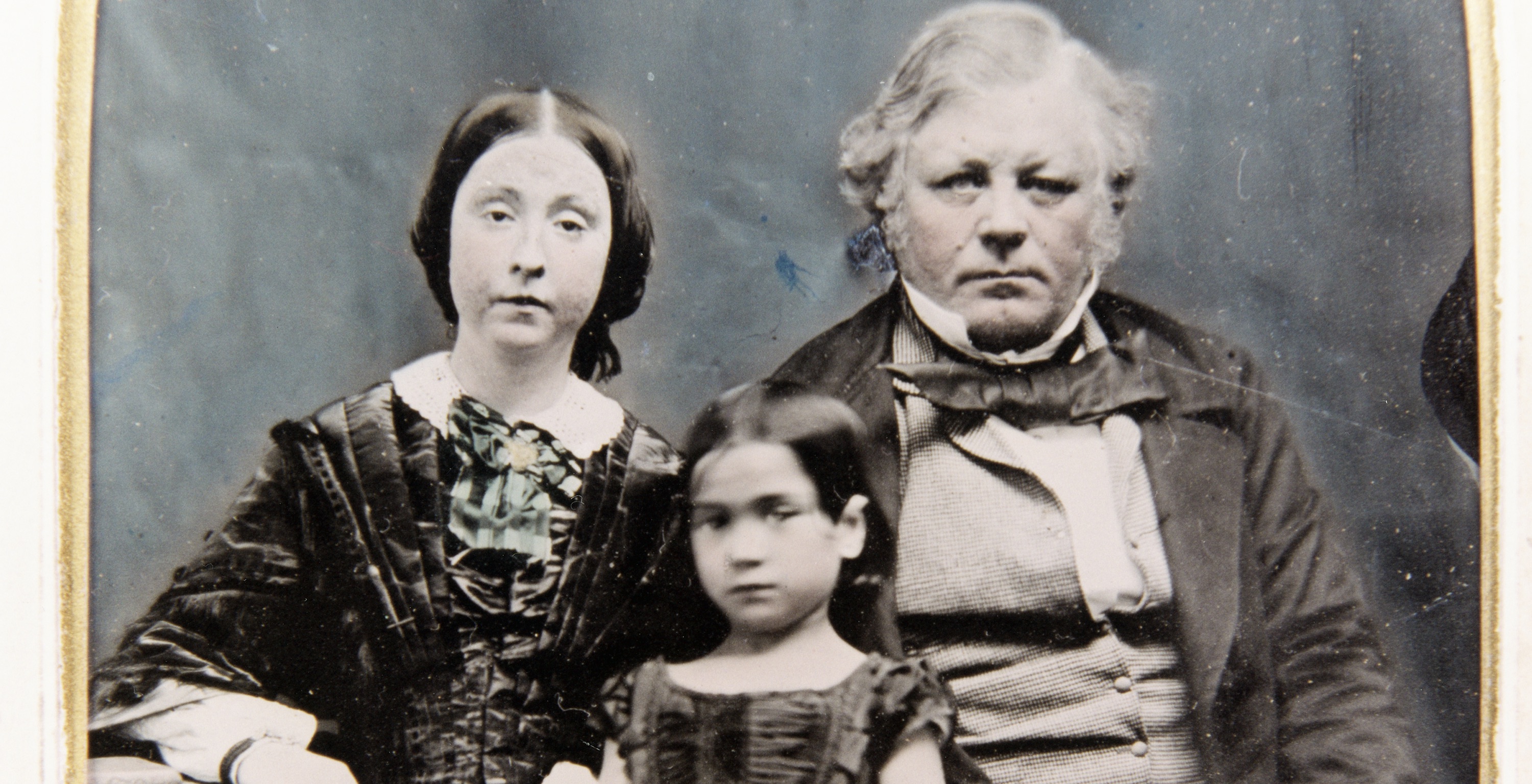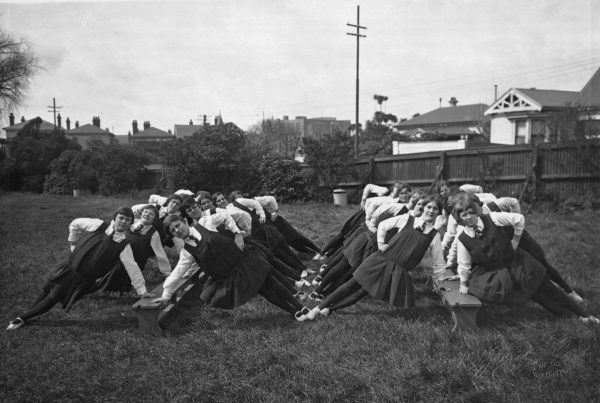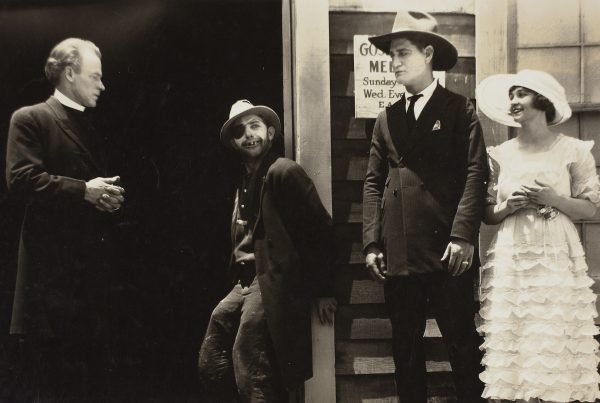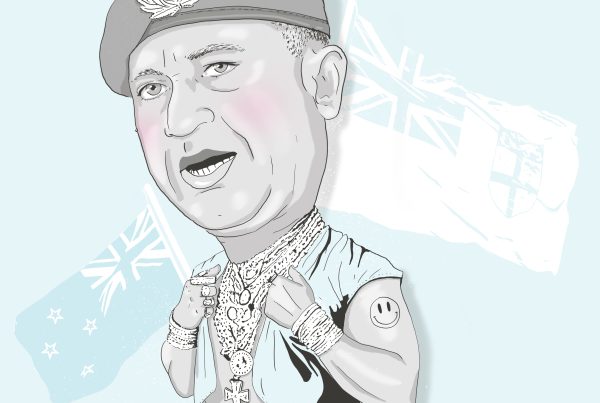
William Barnard, Sarah and Maryann Rhodes, 1858. Coloured ambrotype 9copy0, PAColl-5601. Alexander Turnbull Library.
Here is William Barnard Rhodes (1807–78), the richest man in early Wellington, photographed in 1858 with his first wife Sarah, and Maryann, his Māori daughter from an earlier relationship. It is also one of Wellington’s earliest photographic portraits — a hand-tinted ambrotype, an early form of photography popular in the 1850s. The sitting was probably at G H Swan’s Ambrotype Portrait Studio on Lambton Quay, which had opened for business in late 1857.
Rhodes was one of the first arrivals in Wellington. From his wharf and warehouses on the Te Aro waterfront he built up a business empire based on imports, exports and canny land speculations. At first he was heavily in debt, but in the mid-1840s those difficulties ended when he won contracts to supply meat to the newly arrived British troops. By the time of this photograph he was very wealthy indeed.
Rhodes’ rough edges offended some of the colonial upper crust. It was almost certainly him that Charlotte Godley, wife of the leader of the newly formed Canterbury settlement, mocked in her description of one of her dance partners at a local ball in a letter to her mother in June 1850: “a contract butcher not one bit too good for his situation… a square, fat, dirty-looking man”. But Rhodes was enjoying himself and surely did not much care what the snobbish thought. Wealth brought influence. His common touch appealed to many and he became a leading political figure in the town.
Less is known about Sarah. When the couple married in 1852, she was 18, some 26 years younger than Rhodes. After many miscarriages she died, childless, in 1862. Rhodes later remarried, but there were no further children. Maryann was his only child, although no one has been able to find out who her Māori mother was.
After Rhodes’ death in 1878 there were several years of wrangling over his estate before Maryann, now a beautiful young woman, was confirmed as heiress. She married and moved to England, where she spent the rest of her life as an upper-class gentlewoman.
It is a Wellington story well worth telling. Simon Best’s Frontiers: a colonial destiny, all about Rhodes and his later descendants, was published recently. It’s well researched and a good read. And historian Roberta McIntyre is now delving further into the lives of William, the Rhodes family and Maryann’s inheritance. It promises to be a fascinating tale of colonial class tensions, race relations and avarice.
Caption: William Barnard, Sarah and Maryann Rhodes, 1858. Coloured ambrotype (copy), PAColl-5601, Alexander Turnbull Library




